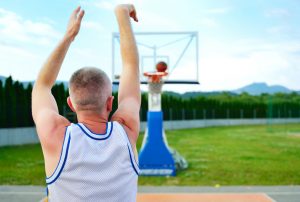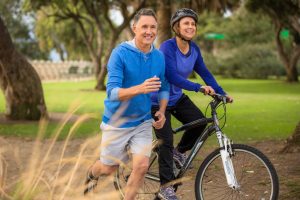A nice, sunny day might give you a little more motivation to do your workout outside. However, for some people being outside in the sun can be exhausting and you’ll find yourself drained by the end of the day. This can be a bad combination especially without taking proper hydration precautions. More often than not, people are suffering from some degree of dehydration yet think their daily water intake is more than adequate. Hydration is not something that comes from same day water intake; hydration is a consistency of proper fluid intake from days prior.
Simply, warmer weather and higher humidity can cause your body to sweat more. The more you sweat the more fluids your body is losing which can cause dehydration if you are not replacing them. If you’re already dehydrated before heading outside, then you may find yourself lethargic and losing energy more quickly. This can easily be prevented and should be taken quite seriously. The general guideline is that you should be drinking 8 8-ounce glasses of water each day. However, this may not be enough for some people; aim for half your body weight in ounces or .5oz-.75oz of water per pound of body weight. For example, if you weigh 150lbs you should be consuming 75oz of water per day.
Especially when you’re exercising outdoors, it is important to be properly hydrated before heading out the door. Regularly consuming the proper amount of water will help you feel better, more energized, and have successful outdoor workouts!
By Tyler Palmquist




